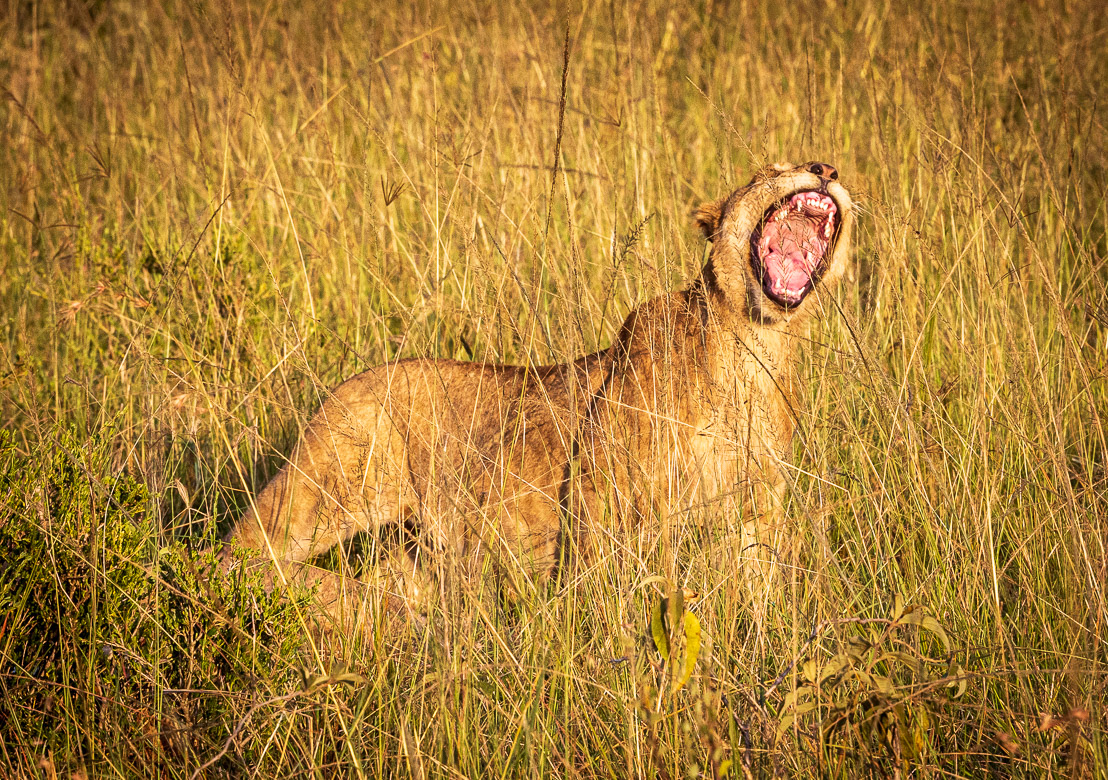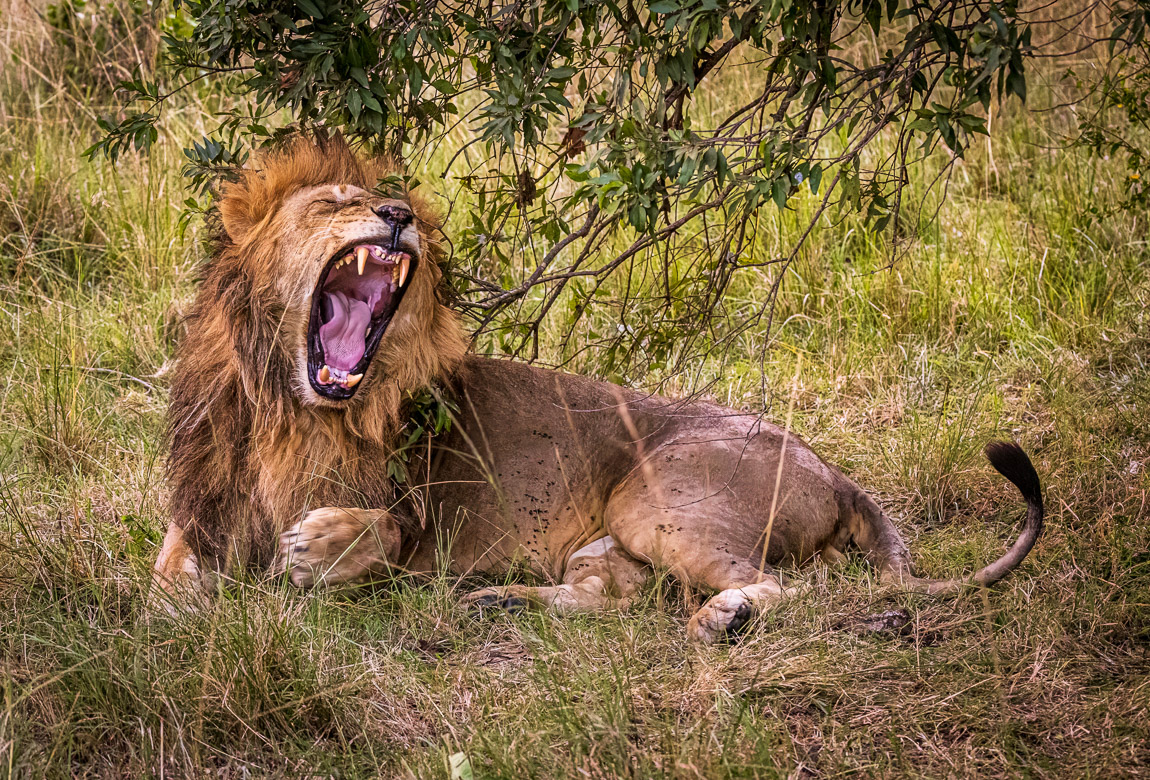
We have moved to the southwest of Kenya to the plains of Masai Mara and I start my posts with a story of probably the most famous of all African animals – the lion. Masai Mara is part of an ecosystem that also comprises Serengeti in Tanzania, which is to the south of Masai Mara. In the west there is an escarpment that is part of the East African Rift, which goes from the Red Sea through Kenya, Tanzania, Malawi and all the way into Mozambique in the south. The rift is caused by Tectonic plates that are moving away from each other. This creates a swampy ground that means that access to water is always good and that of course attracts wildlife.
Wildebeests are the dominant inhabitants of Masai Mara and there are millions of them, but there are also several large gazelles and other antelopes and around 200,000 zebras.
Lions are the second largest cat after tigers and the only cats that live in groups – prides. A pride is a family unit that may consist of anything from two to 40 lions including up to three or four males, a dozen females and then younger lions. The females of the pride are always related. Female cubs stay with the pride as they age, but the young males leave and may establish their own pride, by taking over a group headed by another male.
The males defend the pride’s territory but the female lions are the pride’s primary hunters and leaders. They often work together preying upon antelopes, zebras, wildebeests and other large animals. The males tend to keep themselves a little separate from the females and the cubs.
Lions are the laziest of all the big cats and can sleep for 16-20 hours each day. They tend to hunt in the morning and evening and sleep during midday, when it is hot. The image above shows a typical pride with lionesses and young ones. The males were separate. How many lions can you spot in the picture? Please, give the answer in the form below the post.
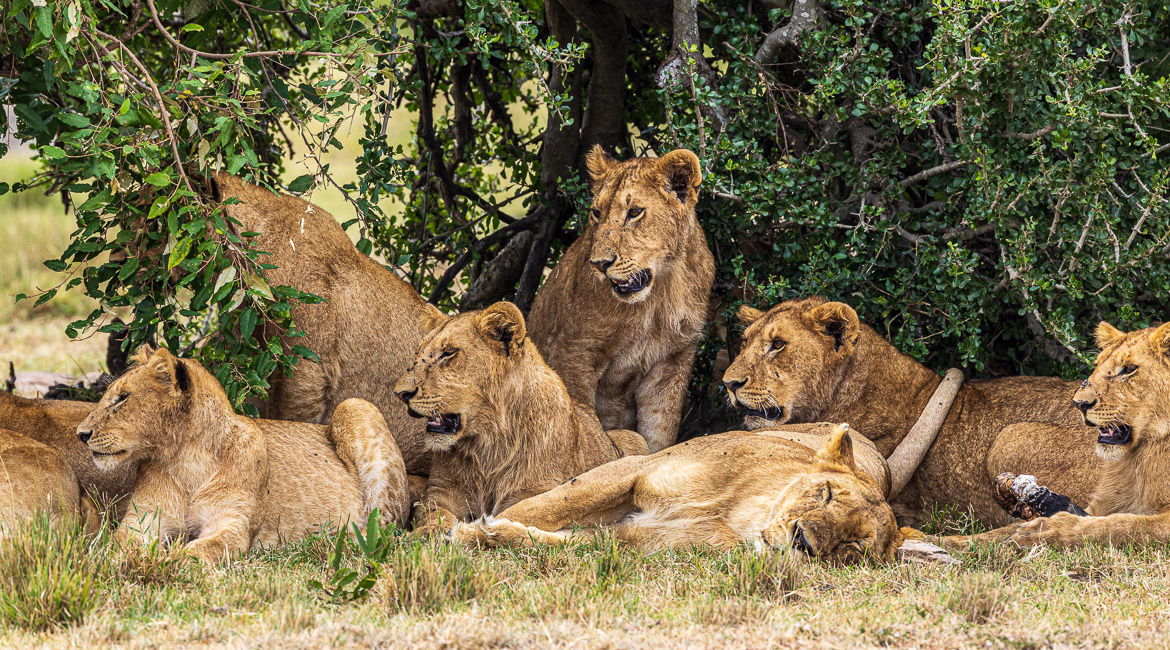
Immediately we arrived into the airstrip, we were met by our guide, Ping. He threw up our luggage in the car and set off for us to meet the lions. And we met a mother with her three cubs that could only be a month old. What a cute sight!





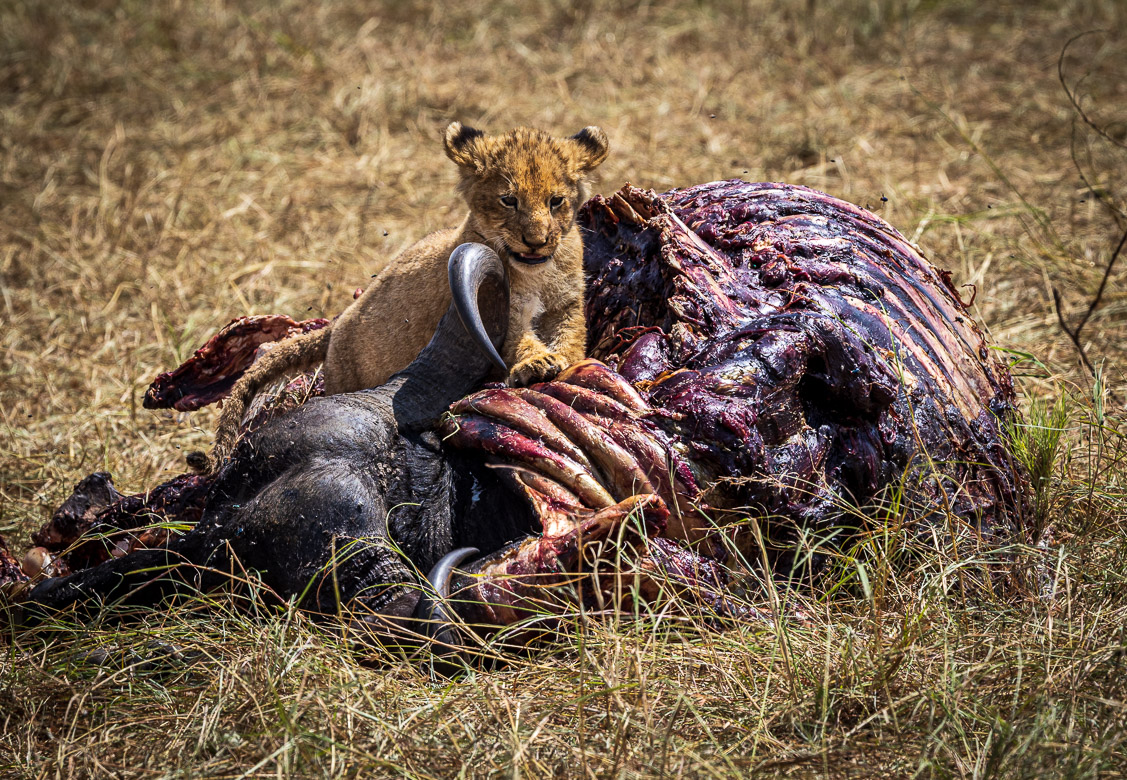
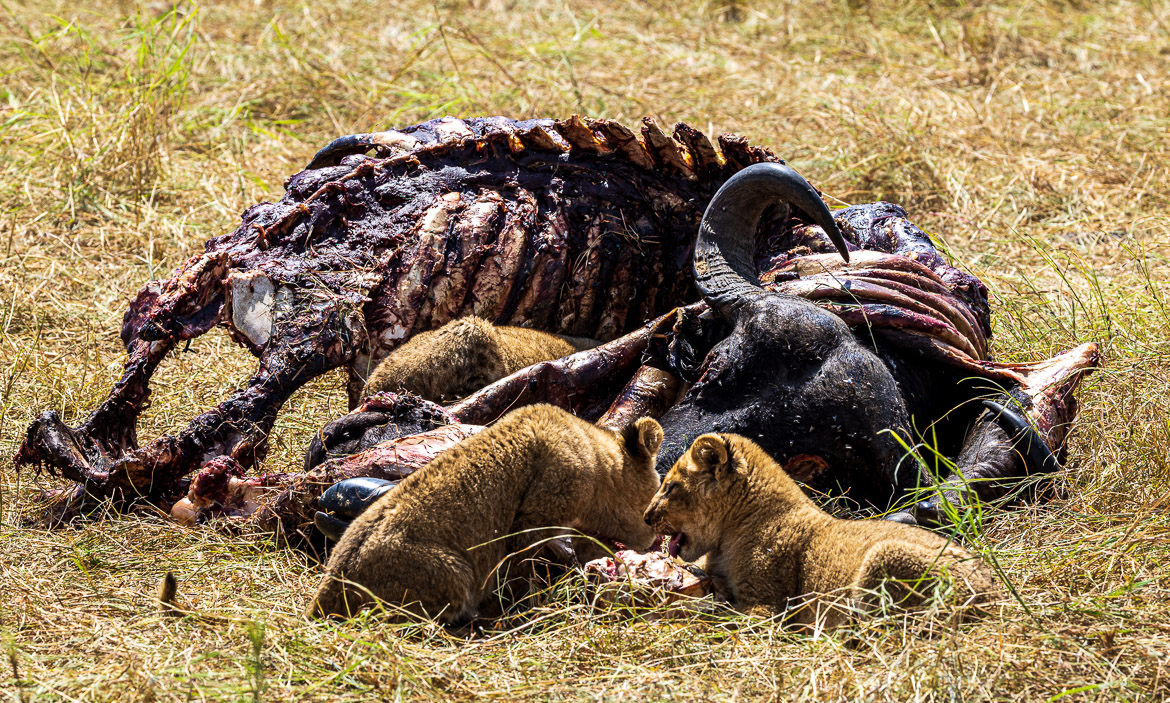

Another of the lions in the pride approached our jeep out of curiosity, but also to find shadow from the relentless sun at midday. You can see how close she is from the angle of the photo. I am looking down at the lion, and she is looking up directly at me contemplating if I will taste as nice as the buffalo, or if she shouldn’t bother. She decided in the end to go for a rest rather than a human meal and settled down in the shadow of our Land Rover.

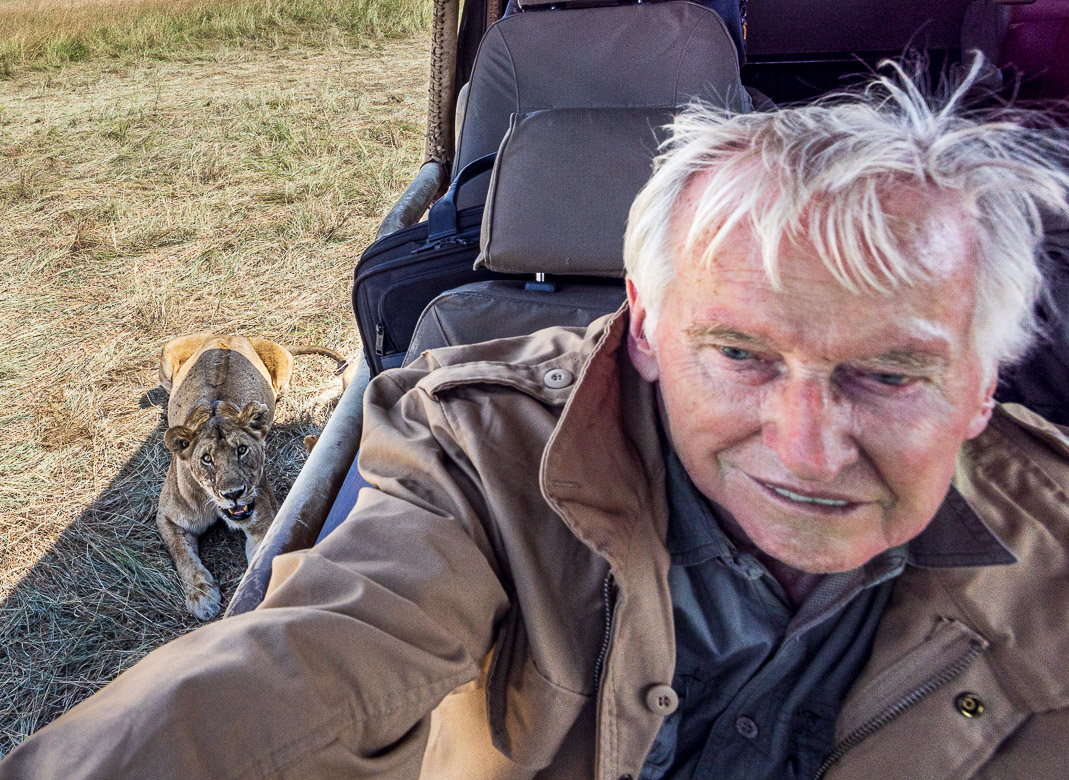

The lions mostly sleep during daytime and start to wake up towards the evening. We ventured out to find another pride of lions one evening. They were covered in high grass on the plain and difficult to spot, but as the evening approached they started to raise up and became active. Although most of them has sat up, it is still quite difficult to spot them in the high grass. I have spotted 9 lions in the first image below, but I am sure there are several more that we cannot see. The evening light made it not only interesting to spot the wildlife, it made for some very attractive photo opportunities of their habitat as well.



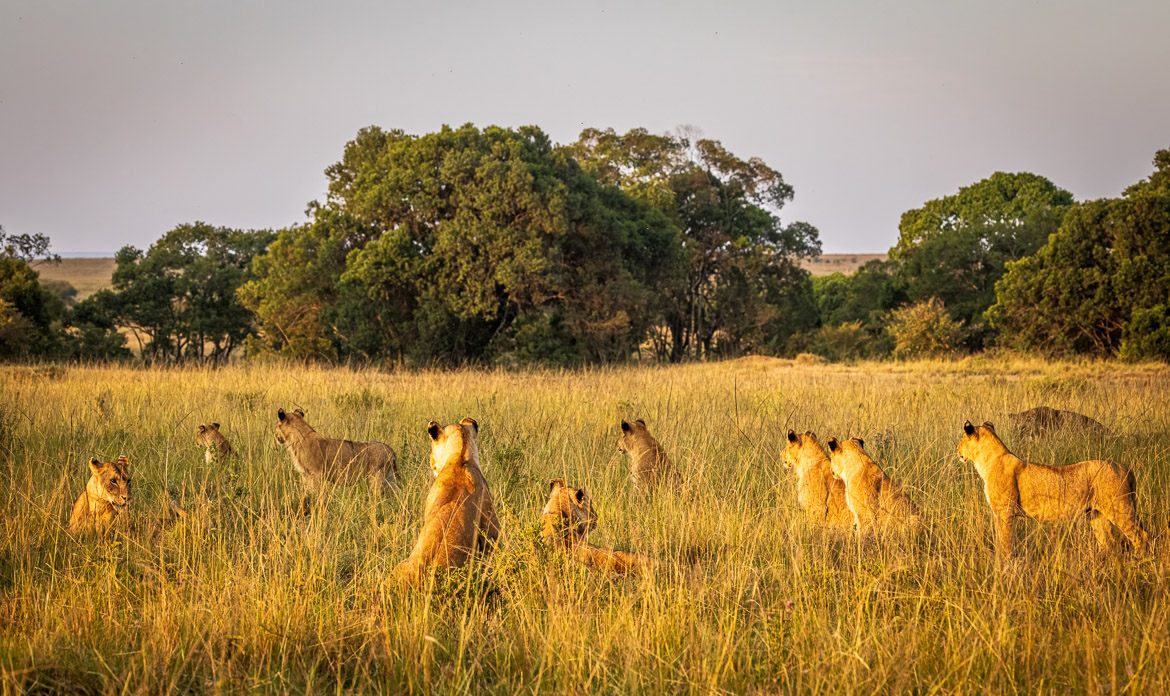
But nowhere in this area could we see any males. They kept themselves separate from the females and only later, when the sun was setting, could we spot a couple of male lions belonging to the pride.


